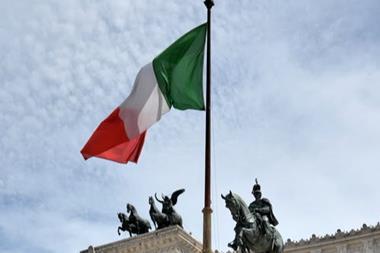The number of Italian workers enrolled in a supplementary pension scheme rose by 7.7% during 2016, according to COVIP, Italy’s pension regulator.
Data released by the authority show that at the end of last year, Italian pension funds had €149bn of assets under management.
The figures only take into account fondi negoziali (industry-wide pension schemes), open pension funds, and “new” PIPs (piani individuali pensionistici). Pension funds that predate the 1993 reform, “old” PIPs, and casse di previdenza (first-pillar pension schemes for white-collar workers) are excluded from the count.
Assets managed by new PIPs and open pension funds grew fastest, adding 18.8% and 10.8%, to reach €23.8bn and €17bn of AUM respectively. Industry-wide pension schemes grew AUM by 8% to €45.9bn.
Similarly, open pension funds and new PIPs saw a 9.5% and 10.5% increase in membership. Total membership for the two categories is now 1.26m and 2.87m respectively. Meanwhile, industry-wide pension schemes registered a 7.3% increase in membership, reaching a total of 2.56m members.
Slower growth in membership at industry-wide schemes was despite the large increases in members of certain schemes, driven by a form of automatic enrolment. Under the terms of new labour agreements signed recently, some schemes, such as those serving the construction industry, automatically enrolled all members of the sector.
However, only employer contributions are mandatory, and the increase in membership was not mirrored by a proportionate increase in assets.
Discussions are taking place within other industries to implement similar forms of automatic enrolment.
Meanwhile, PIPs and open pension schemes, which are generally sponsored by banks and other for-profit financial institutions, are adding members thanks to better information and marketing networks, Covip said.
Italian workers badly need second-pillar pensions, as the replacement rate of state pensions decreases dramatically. Around 6.7m workers are covered by a second-pillar pensions, which equates to less than a third of the working population.
In terms of pension fund investments, Covip said that all three categories of pension schemes covered by its report showed positive returns. Industry-wide pension schemes and open pension funds registered an average return of 2.7% and 2.2% respectively. New PIPs returned 3.6% on average. The results are net of asset management charges and taxes.
Covip added that pension funds with higher exposure to equities performed better in 2016 compared to those with higher exposure to fixed income securities.
The authority said returns were significantly higher than the revaluation rate of TFR (trattamento di fine rapporto), the severance pay fund. The TFR grew 1.6% net of tax during 2016.
The TFR is a form of severance pay provided by employers, and is mandatory under most employment contracts. It is paid as a lump sum to workers at termination of employment. It is seen by the majority of Italian workers as the most convenient form of workplace pension. TFR is therefore used as a yardstick for how well pension schemes are doing.
Workers who decide to contribute to a second-pillar pension deposit their TFR contributions, paid by their employers, into a pension scheme of their choice.












No comments yet